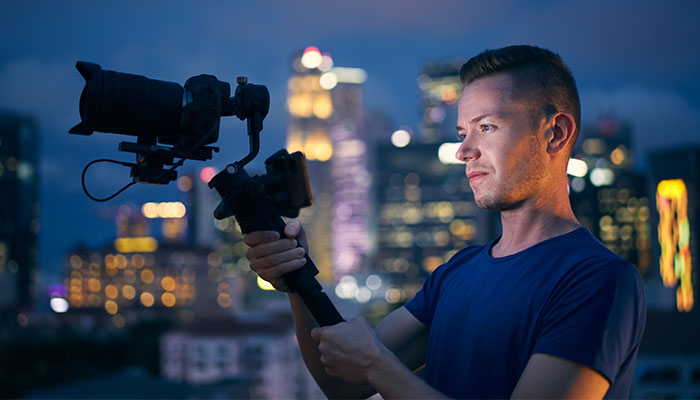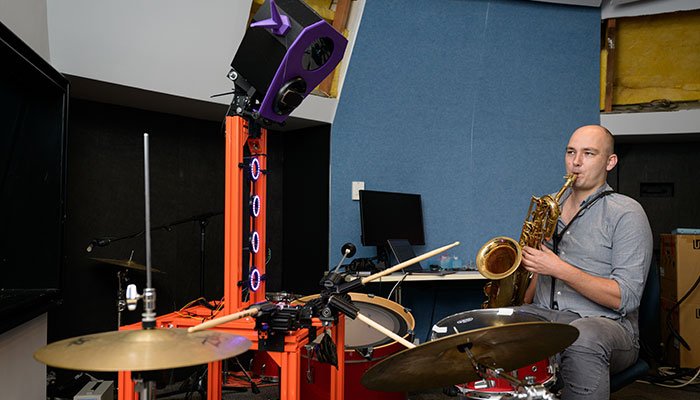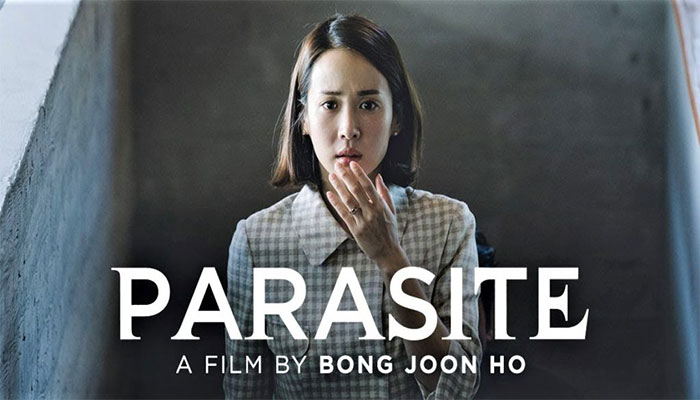About seven years ago, I was introducing to my students what is commonly known as 'the greatest documentary ever made'. Man with a Movie Camera (1929) is most famous for its unsurpassed montage. It is also famous for being a 'reflexive' film. In other words, we see the filmmakers onscreen making the film we are watching.
So, this is a rare historical document: we actually see the person who edited this film onscreen, editing it. And it’s a woman. It is film editor, director, writer, and archivist Elizaveta Svilova, the wife and lifelong collaborator of director Dziga Vertov.
But, if she is the editor, and Man with a Movie Camera is known for its editing, shouldn’t we call it Woman with an Editing Bench? The first film in my trilogy of films about Russian women filmmakers is a bio-pic about Svilova that is called just that.
My trilogy has done exceptionally well at film festivals and has won film industry awards, but it all started with research questions.
Looking for clues in creativity
Creative Practice Research is the generation of new knowledge through creative practice, in my case through filmmaking. This means the knowledge – the ideas, the insights, the provocations about historical women filmmakers' innovations – are in the films themselves.
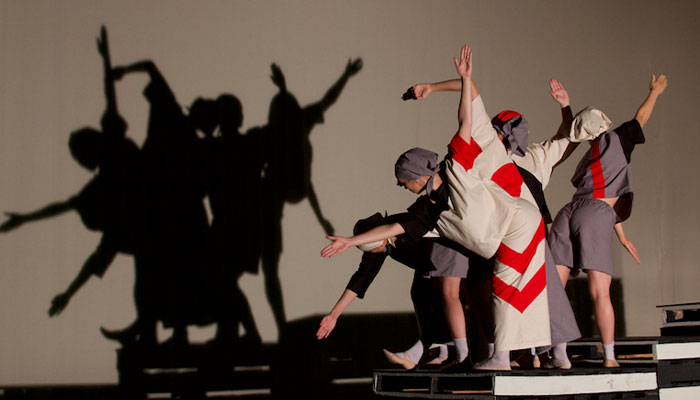
Shadow play: A scene from I want to make a film about women, directed by Dr Karen Pearlman and a finalist in this year's AACTA awards.
Research methods for the project required some creativity. Archival records of women's creative and intellectual participation in the development of film form are insufficient, and often inaccurate.
Since their thinking is not recorded (unlike their more famous male contemporaries), I wondered: can we understand their thoughts by using their techniques?
Specifically, since my own expertise is editing, and since the editing was seen as 'women's work' in the first decades of cinema, I asked: can I recover the undocumented thoughts of women editors by telling their stories using the methods they pioneered?
Editing is the creation of structure and flow for a screen experience. It is a form of choreography, a dance of events and emotions.
My work with Macquarie Professor of Cognitive Science John Sutton uses his ideas about distributed cognition to suggest that if we can understand editors' techniques as modes of cognitive activity, we can analyse these women pioneers’ work and say, 'these edits are their thoughts'.
This research is shedding light on editing as a distributed form of creativity. Editing is the thinking that happens with and through editors' brains, bodies, tools, cultural contexts and collaborations.
But for this to have impact on film historiography and authorship theory, we need to understand what film editors do, and why editing matters.
What do editors actually do?
The role of editors in the authorship of films is under-recognised and under-rated. Editors take hundreds, sometimes thousands, of disparate pieces of material and shape them into coherent and compelling viewing.
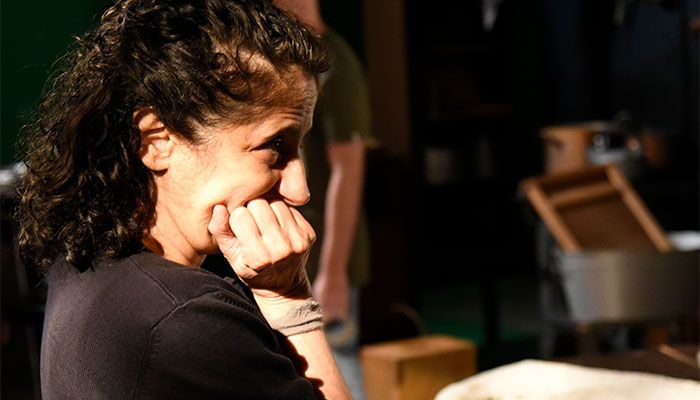
Scene stealers: Dr Pearlman on the set of one of her films ... her successful trilogy all started with research questions about women and filmmaking.
Editing is the creation of structure and flow for a screen experience. It is a form of choreography, a dance of events and emotions, a cognitively complex practice that requires feats of memory, expert judgment and sophisticated creativity.
More questions arise! Has the creative complexity of film editing been misunderstood because it was something women were doing? Or is editing one of the few roles women kept a foothold in, in the male dominated film industry, because its creative complexity was not understood?
So, my film starts in a kitchen. But it is a kitchen where potato peels become film strips and men get put in cupboards.
The second film in the trilogy, After the Facts (2018), is a documentary that uses the techniques of Esfir Shub (1894-1959) to revise the historiography of editing.
Shub is often credited for inventing the remix film. My short remix documentary about her, and Svilova, and Vertov, is even more direct than Woman with an Editing Bench in re-distributing credit for the editor's filmmaking innovation. It is now available as a permanent resource on the Columbia University Women Film Pioneers Project website.
What’s cooking in the kitchen
My research into Shub led to the third film. I want to make a film about women (2019) is a queer, speculative, documentary love letter to Russian constructivist women. It speculates on what Esfir Shub and her colleagues might have said, done and made had it not been for Stalin's suppression. I grapple with the labels that haunt them. They are known in history as wives, muses, intellectuals and not the radical innovators that they really were.

Collaboration: The poster for I want to make a film about women, which explodes the misconception that creativity happens in one individual's mind, says Dr Pearlman.
The women constructivists of the 1920s Soviet Union were hidden by more famous husbands and louder men. Their work often started in domestic contexts, as they re-purposed their everyday tools. So, my film starts in a kitchen. But it is a kitchen where potato peels become film strips and men get put in cupboards.
- Can you really make friends with an octopus?
- Fuel's paradise: NSW energy plan aims to reduce emissions
This film about a community of practice puts new knowledge about creativity on the screen. It explodes the misconception that creativity happens in one individual’s mind. Creative cognition, it reveals, is a product of people, tools, collaborations and culture; it can’t be extricated from all of these things.
It has become a film industry truism that 'good editing is invisible', but my research is suggesting that talking about editing this way is problematic for editors.
I'm making films about women editors to make them visible. Cumulatively, my research films are showing that good editing is not invisible, and neither are the women who do it.
Dr Karen Pearlman is a Senior Lecturer in Screen Practice and Production in the Department of Media, Music, Communication and Cultural Studies. Among the many awards for I want to make a film about women is an Australian Director’s Guild award for Best Directing of a Documentary Short Subject. The film was also shortlisted for Best Short Film in the Australian Academy of Cinema and Television Arts (AACTA) awards, announced on November 30, 2020.
The verdicts
- WHAT THE JUDGES SAID ...
"We want to highly commend Karen Pearlman for her ambitious and masterful mix of forms, combining animation, graphics, dance, documentary and drama, to craft I want to make a film about women." - Dr George Miller, Sophie Hyde, Byran Brown, Sydney Film Festival.
“For a film that is both experimental and dramatized to win Best Documentary at St Kilda is both a tribute to the film but also to the subject – Esther (Esfir) Shub – who in herself totally blurred the boundaries.” - Richard Sowada, St Kilda Film Festival.
WHAT THE REVIEWERS SAID …
“Karen Pearlman’s trio of films rediscovering the work of Soviet women filmmakers are a joy to watch. Each of them is evocative and taut—illuminating and imagining the lives of the amazing women who have had such a (relatively unknown) impact on film, but also providing insight into the creative process and into the critical importance of women’s work through the Stalin era and beyond.” – Magdalena Bell, www.compulsivereader.com
“Pearlman’s reflexive and daring handling of her own thoughts, editing thoughts, rendered in montage and compilation, are an ecstatic conclusion to her observations and arguments throughout the film.” - Sarah St Vincent Welch in Rochford Street Review.

